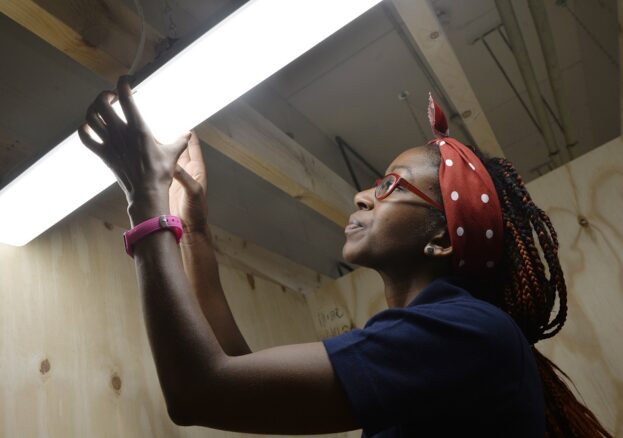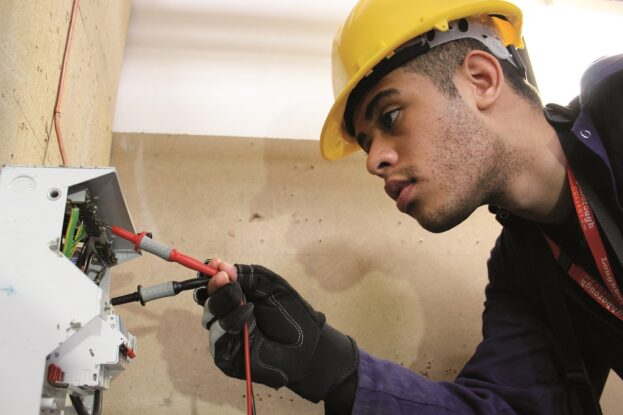
Otis Boykin, Lincoln Hawkins, Garrett Morgan, Shirley Jackson, Lewis Latimer, Marie Van Britten…just to name a few people who have had an impact on our world – but does everyone know who these people are? These are all people from the Black, Asian and Minority Ethnic (BAME) community who have played an inventive role or contributed to the electrical engineering sector in recent history, yet these individuals and many more inspiring people remain ‘hidden figures’.
As a leading training provider for electrical and heating and plumbing apprenticeships, JTL is both committed to and supportive of driving change across the building services engineering sector. To coincide with Black History Month (October), Rachel Jagger-Thomas, the diversity, safeguarding and inclusion advisor at JTL is speaking about the industry opportunities for people in the BAME communities.
Let’s face facts
In August this year, the House of Commons Apprenticeship Statistics Briefing Paper revealed that the overwhelming majority (86%) of all learners starting an apprenticeship were white in 2018/19. The proportion of starters from BAME backgrounds was 12.3%, its highest level – an increase from 11.2% in 2017/18. The number of starters from a BAME background gradually increased between 2011/12 and 2016/17, from 51,350 to 55,310 in 2016/17. Both the number of starters from a white background and a BAME background fell between 2016/17 and 2017/18. From 2017/18 to 2018/19, the number of starts by apprentices from a BAME background increased by over 6,000 – yet there’s still a very long way to go to increase these numbers and showcase the benefits of a diverse working environment.

Industry opportunities
The UK is a multicultural country where anyone seeking a career in the electrotechnical, plumbing, heating and ventilation trades has every opportunity to do well and be successful. Simply put, a person’s race, gender or age should be inconsequential – if you have the drive to succeed then you will.
With the current skills shortages in the building services engineering sector, there’s clearly the demand for these roles. So, what is preventing members of the BAME community from taking up a career in the skilled trades? Unfortunately, it is a common misconception that many young people believe that becoming an electrician or plumber “isn’t for them” – yet trade courses are academically challenging and can open the door to many other opportunities. Additionally, apprentices also need to be able to demonstrate good creative thinking and strong problem-solving skills when translating theory and techniques into actual practice.
Undertaking an apprenticeship allows you to earn while you learn, gaining valuable on-the-job experience while studying for industry-recognised qualifications in a skilled trade. The earning potential is good. Heating engineer apprenticeships, for example, start at £15,000 per year on average and once qualified, can earn between £25,000 and £35,000 per year, or even up to £50,000 for highly experienced engineers. Alternately, completing an intermediate level apprenticeship may be the first step on a journey to further qualifications in the future.
The changes to university life as a result of the Covid-19 pandemic, as well as the prospect of heavy student debt from gaining a degree that may never be used, may make the apprenticeship route even more desirable.
Better for employees and clients
According to a FE Week report in August 2019, millennials (generation Y) will make up approximately 75% of the worldwide population by 2025, occupying a growing number of leadership roles in the workplace. 74% of this generation also believes that their workplace is more innovative when the culture is more inclusive.
Nearly half (49%) of employers surveyed for LinkedIn’s Global Recruiting Trends 2018 said they focus on diversity to better represent their customers. Other key reasons given included ‘to improve company culture’ (78%) and ‘to improve company performance.’
Studies reveal that companies with a diversity score that is above average see, on average, a 45% increase in innovation, while those who are below average see a 26% increase in comparison. Greater diversity sets a virtuous circle in motion, making companies more attractive to a broader range of talented individuals.
An ethnically diverse workforce can make a company more attractive to would-be employees. It’s also more attractive to customers and more competitive in its approach due to their customer base being better represented. Additionally, their workforces can draw on more experiences and wider perspectives to generate better ideas and progress more quickly.
JTL is committed to equality and diversity for all. We want to establish a culture of equality and diversity so that all applicants, apprentices, employers, sub-contractors and our staff have the opportunity to work in and towards an environment that is non-discriminatory. For more information about JTL’s apprenticeships opportunities and commitment to creating a more diverse workforce, visit https://www.jtltraining.com/apprenticeships/.
To learn more and to view JTL’s profile on Black History Month, visit https://www.blackhistorymonth.org.uk/article/profile/section/education-training/jtl-training/
